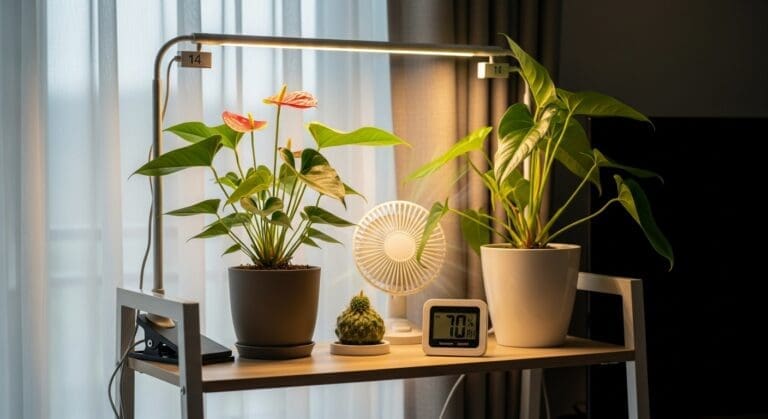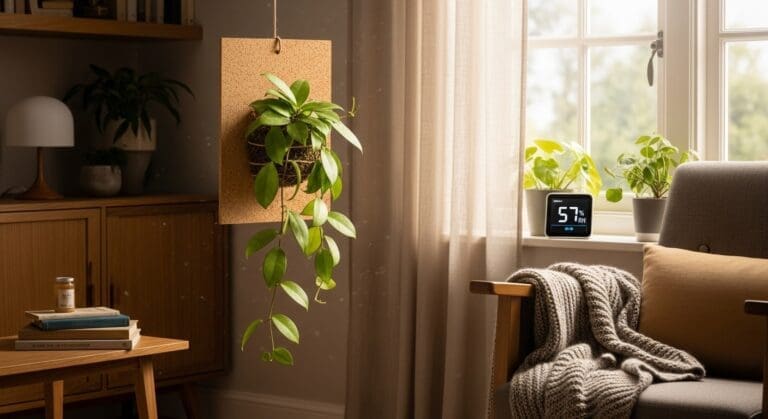If you’ve ever gone away for a few days and returned to find your prized ferns drooping, self-watering pots might sound like the ultimate solution. But as any plant lover knows, what works for one plant can spell disaster for another—especially moisture-loving yet root-sensitive ferns. Let’s explore when self-watering pots are a blessing for your ferns and when they might silently encourage root rot.
Why Ferns Are Tricky with Watering
Ferns, especially rare and exotic ones like maidenhair and bird’s nest ferns, have fine root systems that need consistently moist (but not soggy) soil. In the wild, they thrive in shaded forest floors with humidity and gentle rainfall—conditions that don’t involve sitting in stagnant water.
Root rot happens when excess water deprives roots of oxygen, allowing harmful fungi to thrive. For ferns in self-watering pots, this can happen if the reservoir stays constantly full without allowing the soil to “breathe.”
💡 Related reading: If you’re just starting with indoor fern care, check out our Rare Ferns Indoors: The Complete Care Guide for essential watering and humidity tips.
How Self-Watering Pots Work
Self-watering pots have a water reservoir at the bottom and a wicking system (often a cotton rope or a soil column) that draws moisture upward. This keeps the soil consistently damp without daily watering.
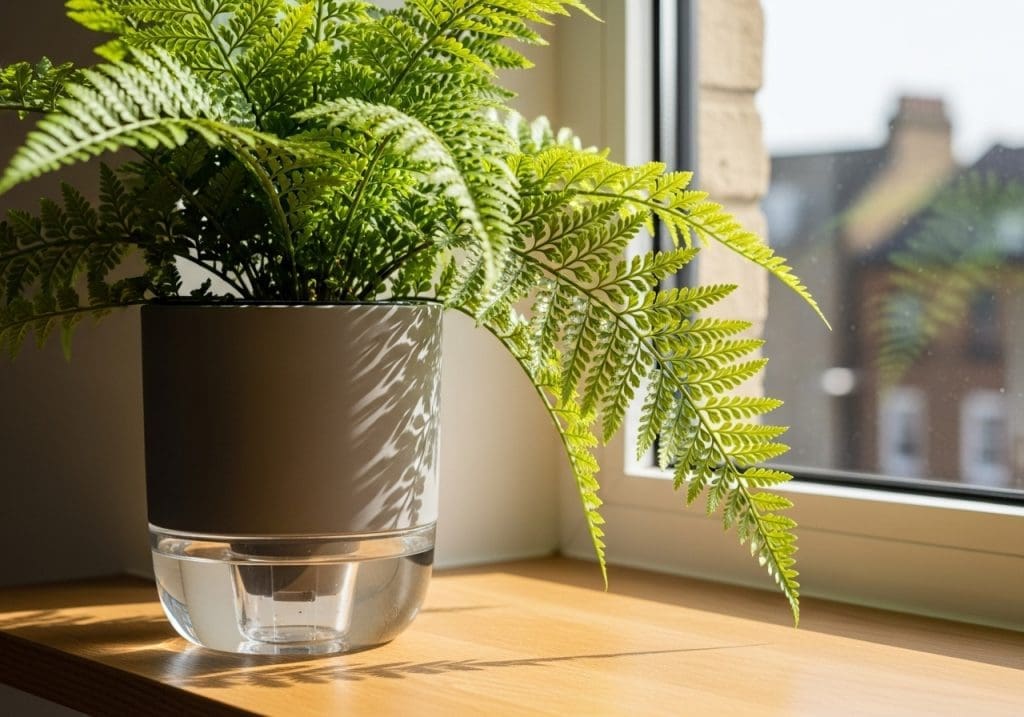
The Benefits for Ferns
When used correctly, self-watering pots can:
- Maintain steady moisture levels, preventing drying out.
- Reduce watering frequency—perfect for busy plant parents.
- Provide a buffer during hot summer days when soil dries faster.
“I remember the first time I left my Boston fern in a self-watering pot over a heatwave. I came back to fresh green fronds instead of crispy tips—it felt like magic.”
The Risks: When Self-Watering Pots Cause Root Rot
The same system that keeps your plant hydrated can drown the roots if:
- The reservoir is always topped up without breaks.
- The soil mix is too dense, preventing air flow.
- The plant sits in a cool, low-light environment where evaporation is slow.
Expert insight: Jane Ellis, curator at the Royal Botanic Gardens, Kew, explains,
“Self-watering pots are tools, not miracles. Ferns need a rhythm of moisture and slight drying—without that, anaerobic conditions set in and rot begins.”
Signs Your Fern Is Struggling in a Self-Watering Pot
Watch for:
- Yellowing lower fronds
- A musty smell from the soil
- Mushy, blackened roots when you inspect them
- Soil that feels soggy at the top layer
If you notice these, it’s time to let the pot dry out partially before refilling.
How to Choose the Right Self-Watering Pot for Ferns
Look for features such as:
- Clear reservoir indicator so you don’t overfill.
- Breathing holes for airflow.
- Removable wick so you can control water flow.
- A lightweight potting mix with perlite or orchid bark for better drainage.
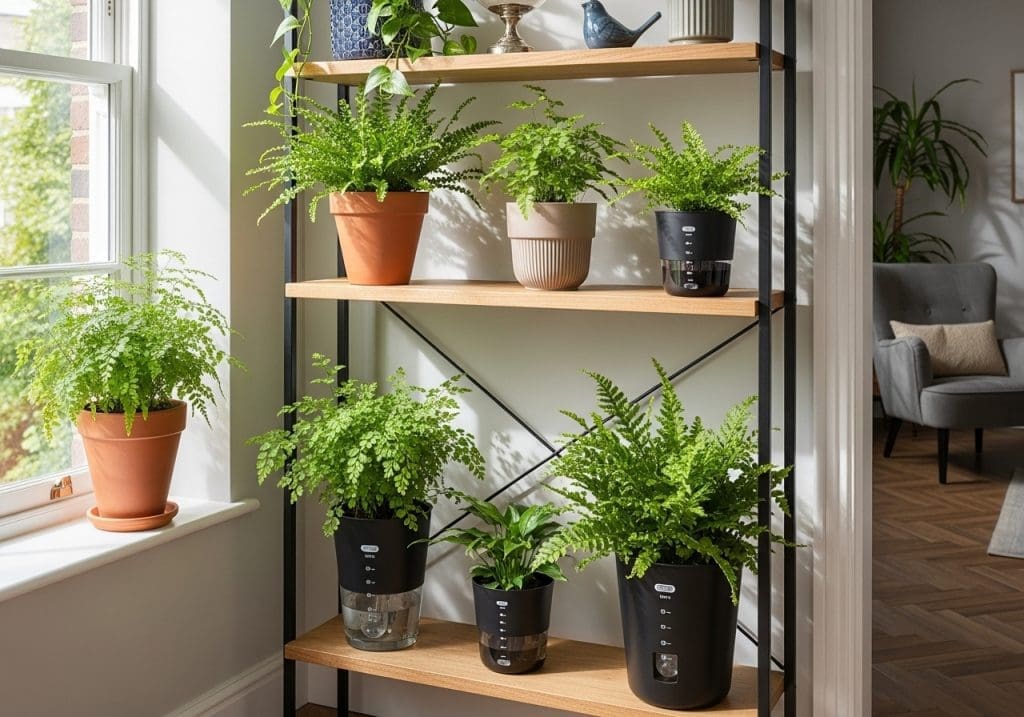
Best Practices for Using Self-Watering Pots with Ferns
1. Adjust to the Season
In winter, ferns grow slower and need less water. Let the reservoir run dry occasionally. In summer, refill more often.
2. Use the Right Soil
Avoid heavy garden soil. Go for a loose, peat-free houseplant mix with added perlite.
3. Combine with a Hygrometer
Knowing your soil moisture helps prevent overwatering. Digital hygrometers can alert you when it’s time to refill.
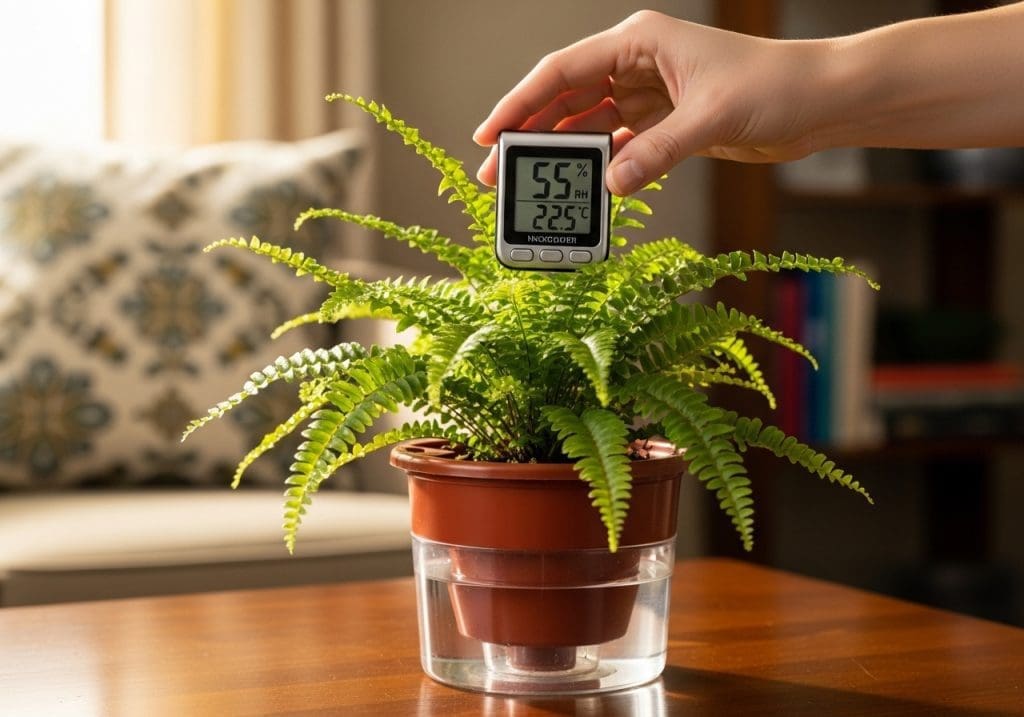
When Self-Watering Pots Are Not a Good Idea
Skip them if your fern is:
- Newly repotted (roots need to adjust first).
- Recovering from root rot.
- Placed in a dim, cool room with low evaporation.
“I once tried a self-watering pot with my maidenhair fern in winter—big mistake. It sat in cold, damp soil for weeks, and I lost half the fronds.”
Alternatives to Self-Watering Pots for Ferns
- Capillary mats: Allow pots to draw moisture from below without sitting in water.
- Pebble trays: Boost humidity without affecting soil moisture.
- Manual bottom watering: Place the pot in a shallow tray for 10 minutes, then remove.
For more on humidity control, the Royal Horticultural Society offers a detailed guide on indoor plant watering.
Balancing Moisture and Air for Happy Ferns
Self-watering pots are not inherently bad for ferns—they just require active monitoring. Think of them as a convenience, not a hands-off solution. By pairing them with breathable soil, seasonal adjustments, and occasional checks, you can enjoy lush, vibrant ferns without fear of root rot.

RarePlantCare Editorial Team produces expert content on rare plants.
Our articles are AI-assisted and human-edited before publication.
We aim to provide practical, evidence-based guides for plant lovers worldwide.
Learn more about our Editorial Policy



